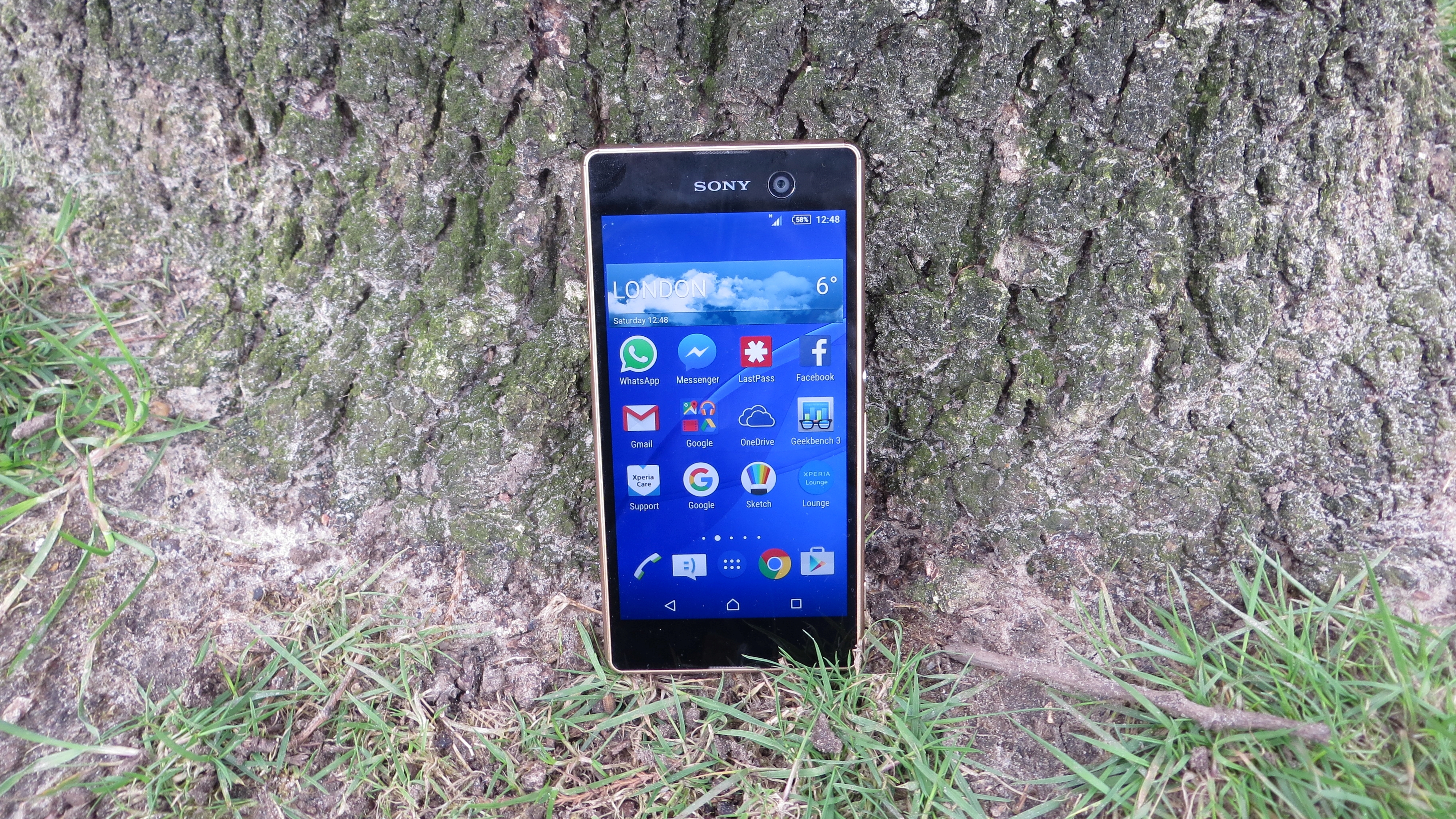Why you can trust TechRadar
- Not bad benchmarking scores considering price point
- Comes with 3GB of RAM, stocked with Android 5 Lollipop
- Software can now be upgraded to Android 6 Marshmallow
A 2GHz octa-core processor and 3GB of RAM ensure the Sony Xperia M5 isn't lacking for power, at least on paper – although it uses a Mediatek Helio X10 chip rather than the more powerful Snapdragon 810.
In Geekbench 3 benchmarks the M5 averaged a single-core score of 861 and a multi-core score of 3432. That puts it significantly ahead of the Sony Xperia M4 Aqua, which scored 656 for single-core and 2545 for multi-core.

But it fares worse against the OnePlus 2, which trounces it in multi-core tests with a score of 4795. The Sony Xperia Z3+ also tops the M5, with a multi-core score of 4057. That's not really a surprise as the Z3+ is a flagship – and while it isn't Sony's latest flagship, you can pick it up for a similar price to the Xperia M5 these days, so it's a comparison worth making.
While you can get more for your money here, in practice the Sony Xperia M5 performs well. I experienced no slowdown or overly-long loading times when playing Real Racing 3 or Asphalt 8, and both looked great on the screen, although the single speaker produced slightly tinny sound.
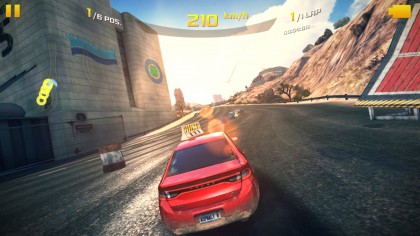
The phone does noticeably heat up over the course of an extended gaming session, but not to uncomfortable levels. Sadly, there's no PS4 Remote Play here, so you're limited to Android games.
Using and jumping between apps was a generally smooth experience. Some apps, such as Google Play and the camera, would take a beat to load, but otherwise I had a speedy experience.
The interface doesn't stray too far from stock Android, although we're talking Android Lollipop here, not Android Marshmallow. That said, you can now download Android 6 Marshmallow software to the phone in most markets.
The notification shade is familiar and the app drawer, while laid out slightly differently, is present and correct.
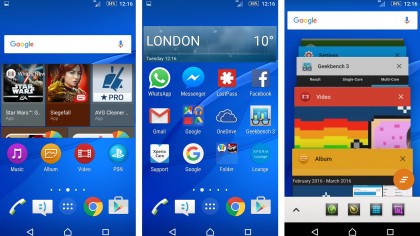
However, the Xperia M5 comes with a large number of widgets clogging up the home screens, which thankfully can be removed, and a large number of preinstalled apps, many of which can't.
That eats up a significant chunk of the 16GB of built-in storage, so you'll definitely want a microSD card – but at least that's an option.
Many of the pre-installed apps are quite useful too. There are Google staples like Maps and YouTube, plus a File Manager.
But there's also a certain amount of overlap, with Sony's own music and video offerings included alongside Google's, and there are apps that many people probably won't touch, like 'Sketch', which is a fairly basic sketchbook, and 'What's New', which basically just advertises other apps and content.
Battery life
- Packed with a 2600mAh battery pack - 200mAh higher than Xperia M4 Aqua
- OK battery life, but likely won't impress you much
- Comes with extra battery saving features such as Ultra Power Saving Mode
The Sony Xperia M5 has a 2600mAh battery, which is a slight bump up from the Xperia M4 Aqua and its 2400mAh juice pack, but no match for the Moto X Play, which is a similarly priced phone with a 3600mAh battery.
Despite it not having a mammoth capacity, Sony has hyped up the battery life on the Xperia M5, claiming it can keep going for up to two days, which is a claim it makes for many of its phones.
Technically it probably can, but only if you really don't use it much. As I write this section the phone has been off-charge for 90 minutes and is down to 90%.
In that time I've fired off a few WhatsApp messages and spent a few minutes playing with apps and Facebook. But I've mostly been writing with the screen off, and when it has been on it's been at around mid-brightness, so it's not a brilliant showing.
To give another example of battery use, 20 minutes of Asphalt 8 knocked 11% off the battery, again at a middling screen brightness. That's not bad at all, as it's a fairly effects-heavy game, but play it for any length of time and the battery won't last one day, let alone two.
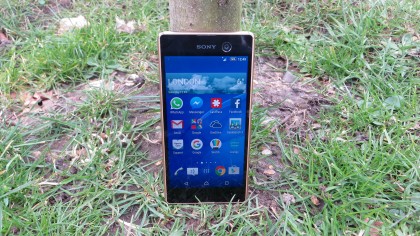
I also put the Xperia M5 through our standard battery test, which involves running a 90-minute video at full screen brightness with Wi-Fi on. Over the course of the test the Sony Xperia M5 lost 24% of its life.
That's a decent result, and an ever so slight improvement on the 25% drop shown by the Sony Xperia M4 Aqua. But it's far worse than the 15% drop achieved by the Moto X Play – a phone that can really justify shouting about its battery life.
Overall the Sony Xperia M5 was slightly above average in terms of battery performance, in my experience. It was never in danger of dying before the end of the day, but would usually be below 30% by the time I hit the hay at around midnight.
That's with moderate mixed use of all functions, including gaming, camera, apps and messaging – although when I was hitting the phone hard in my first couple of days with it, it was dropping to below 20%.
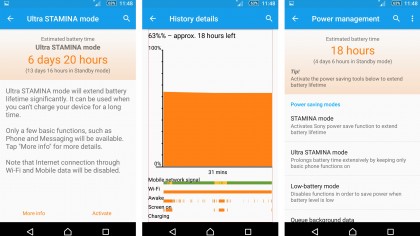
One thing the Sony Xperia M5 has in its favour is its wealth of battery-saving tools. There's a 'STAMINA mode', an 'Ultra STAMINA mode' and a 'Low-battery mode', all of which disable or limit various functions to keep the phone going longer.
There's also the option to save battery life by sending background data at set intervals – this is turned on by default – and information on which apps are sucking up the most juice in the background.
This gives you far more scope to maximise the Xperia M5's life than most phones do, but it all ultimately means limiting background tasks, turning background data off or even uninstalling apps, which aren't ideal solutions.
Don't get the wrong idea here: the Sony Xperia M5 has decent battery life, above-average even, but if you live a lot of your life on your phone it's not going to last the two days claimed.
James is a freelance phones, tablets and wearables writer and sub-editor at TechRadar. He has a love for everything ‘smart’, from watches to lights, and can often be found arguing with AI assistants or drowning in the latest apps. James also contributes to 3G.co.uk, 4G.co.uk and 5G.co.uk and has written for T3, Digital Camera World, Clarity Media and others, with work on the web, in print and on TV.
